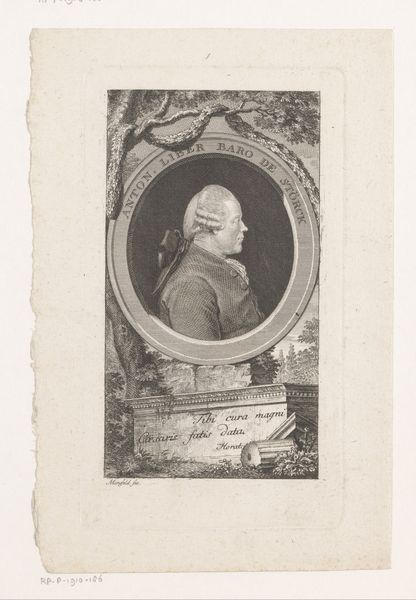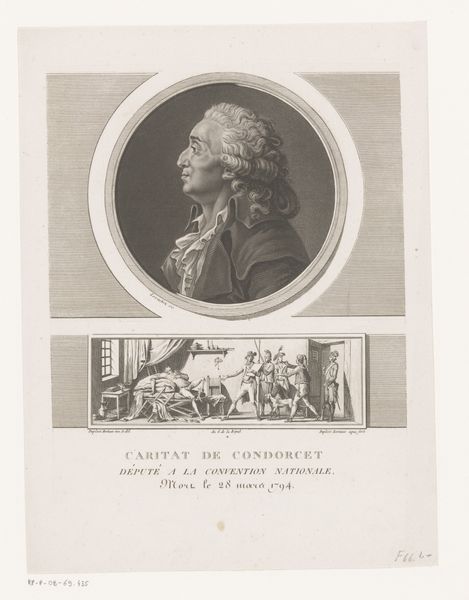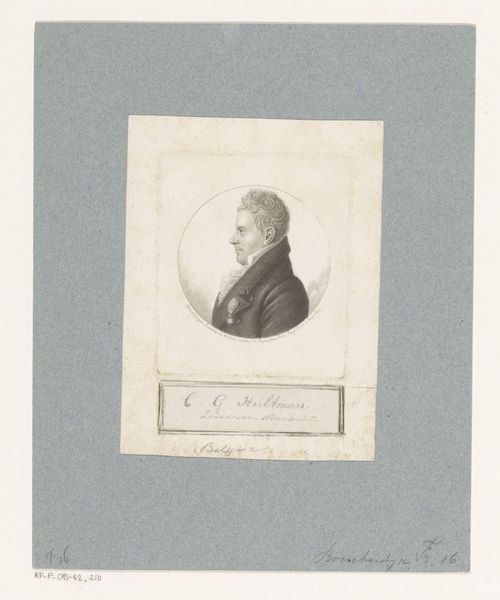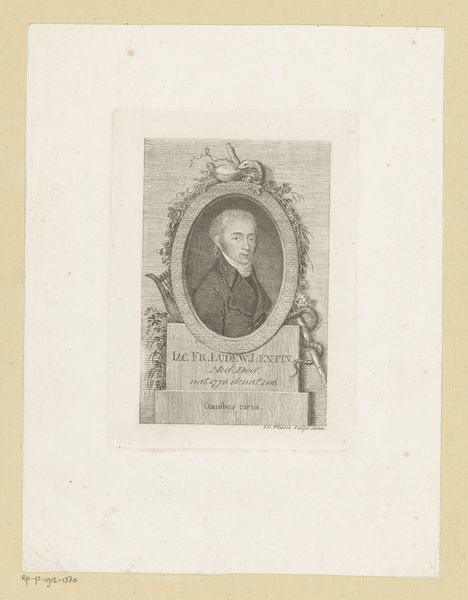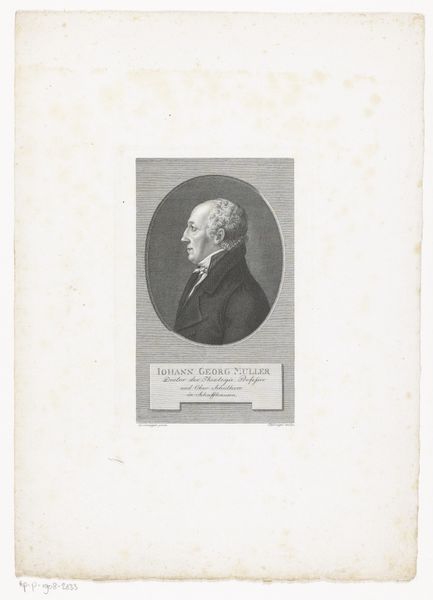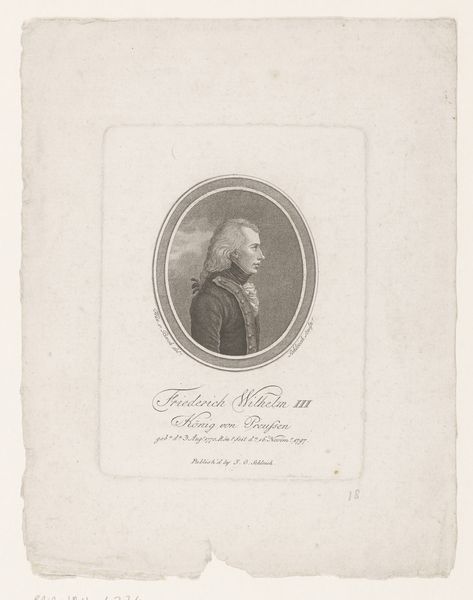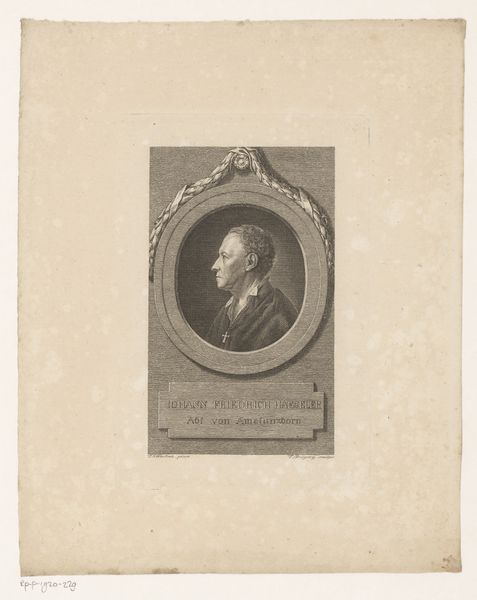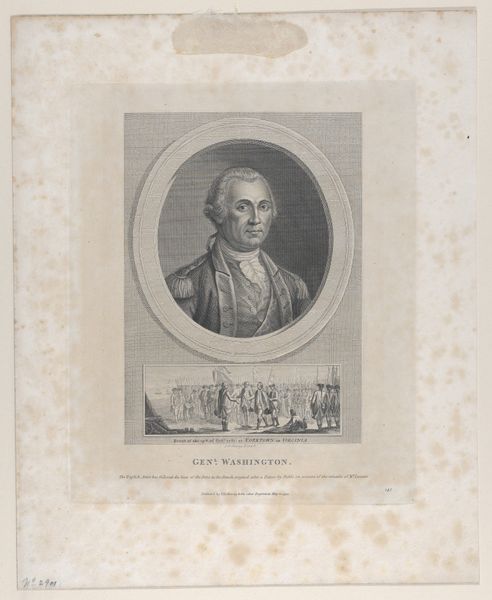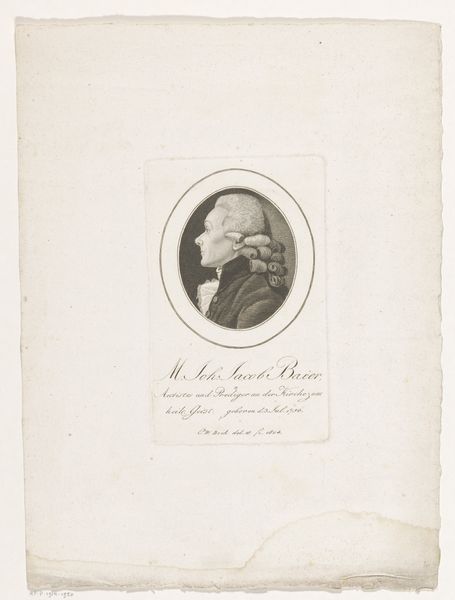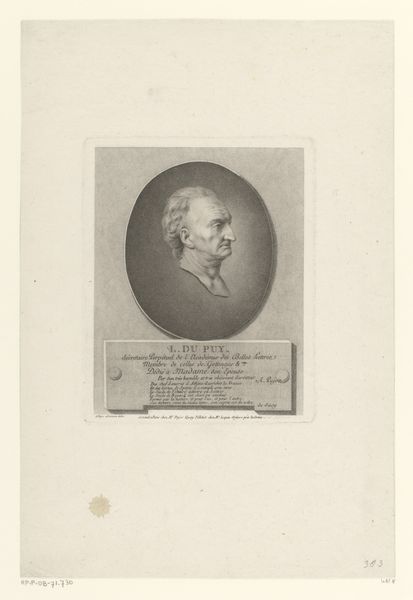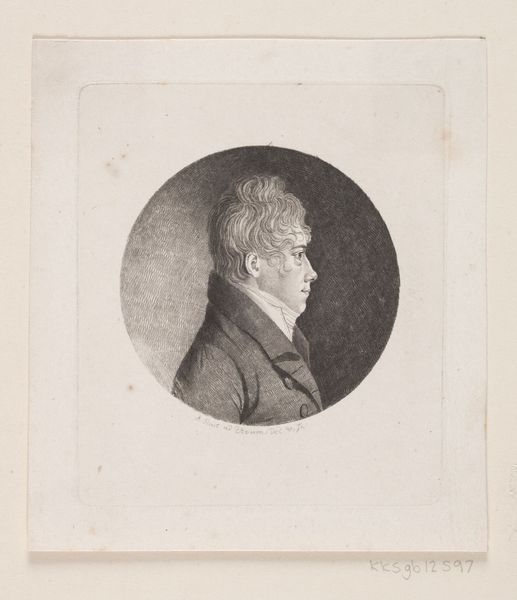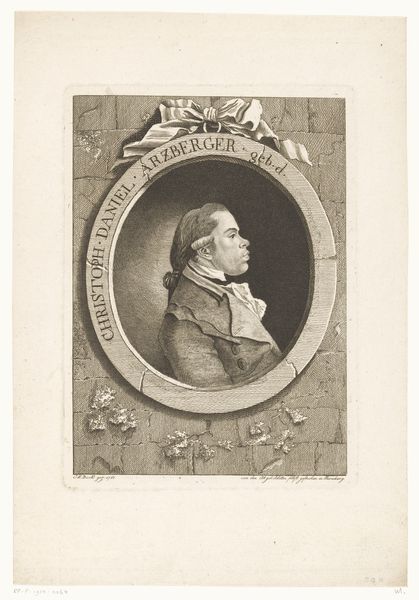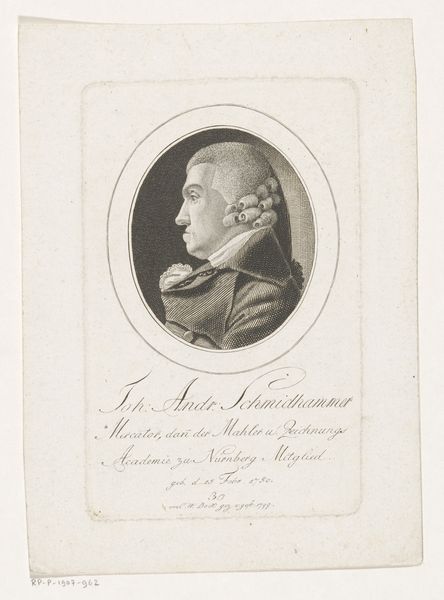
Portret van Jean Sylvain Bailly boven een afbeelding van de Eed op de Kaatsbaan c. 1793 - 1820
0:00
0:00
engraving
#
portrait
#
neoclacissism
#
line
#
history-painting
#
engraving
Dimensions: height 209 mm, width 205 mm
Copyright: Rijks Museum: Open Domain
This is an engraving of Jean Sylvain Bailly by Charles Francois Gabriel Levachez. Bailly was a key figure in the early days of the French Revolution. Levachez made this portrait after Bailly's death in 1793. The image combines Bailly’s portrait with a depiction of the Tennis Court Oath, a pivotal moment where members of the Third Estate swore not to disband until they had written a new constitution. Bailly, as president of the National Assembly, is shown prominently in the Oath scene, leading the charge for reform. France in the late 18th century was a society on the brink, with deep social and economic inequalities. The Revolution was driven by a desire to overturn the old order, but like so many revolutions, it devoured its own children. Bailly, a leader of the early Revolution, was eventually guillotined during the Reign of Terror. To fully understand this image, historians would consult sources such as contemporary newspapers, pamphlets, and the records of the National Assembly. These resources help us understand the social conditions that led to the revolution and the complex politics of that era.
Comments
No comments
Be the first to comment and join the conversation on the ultimate creative platform.
